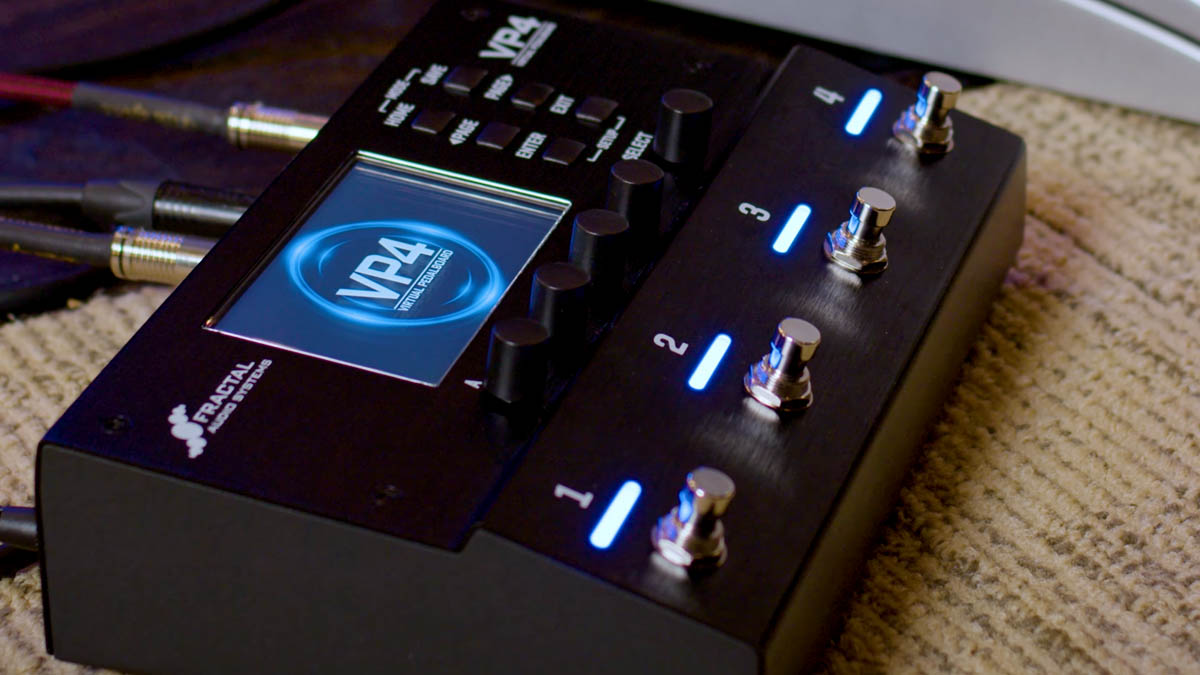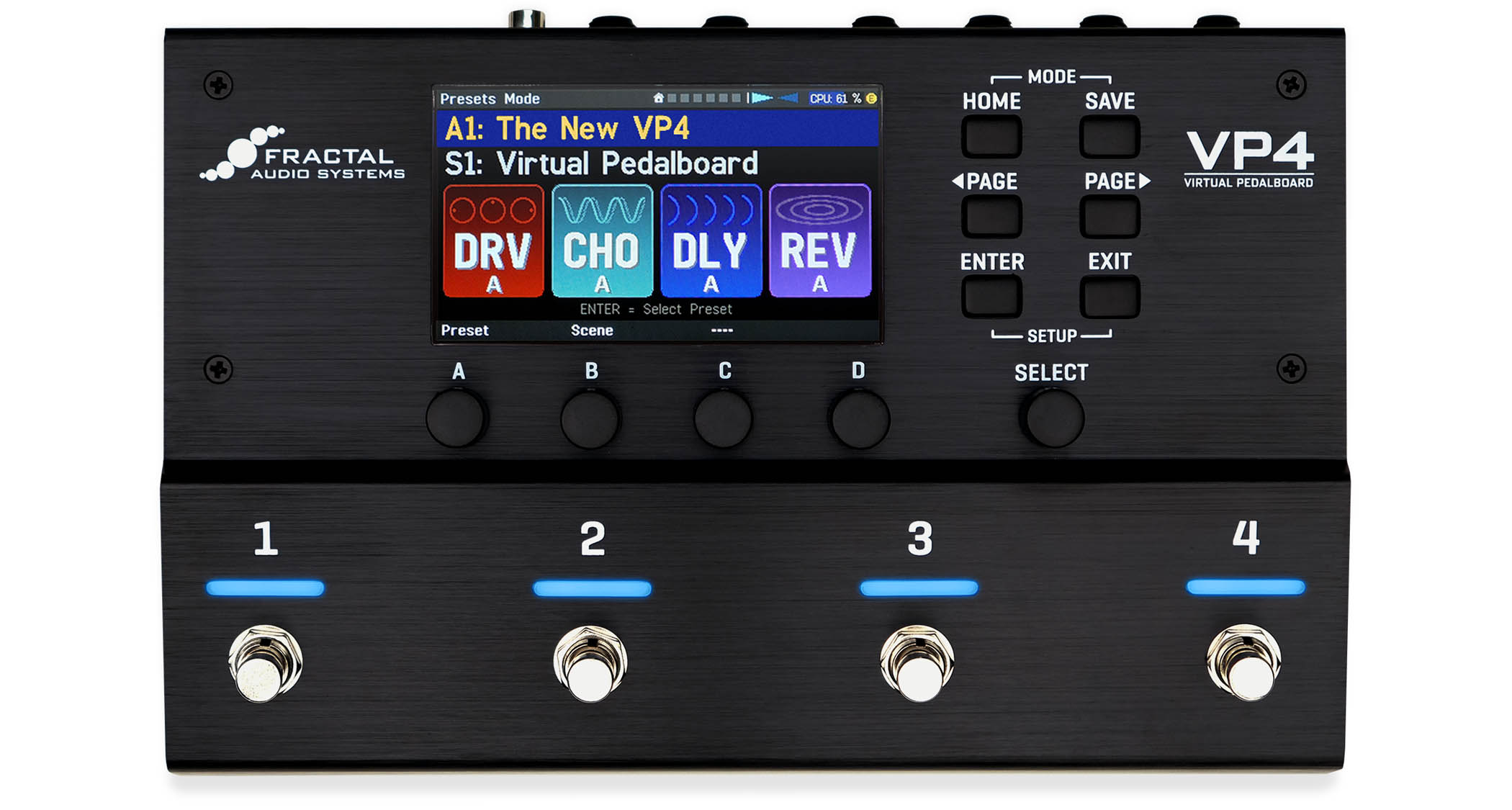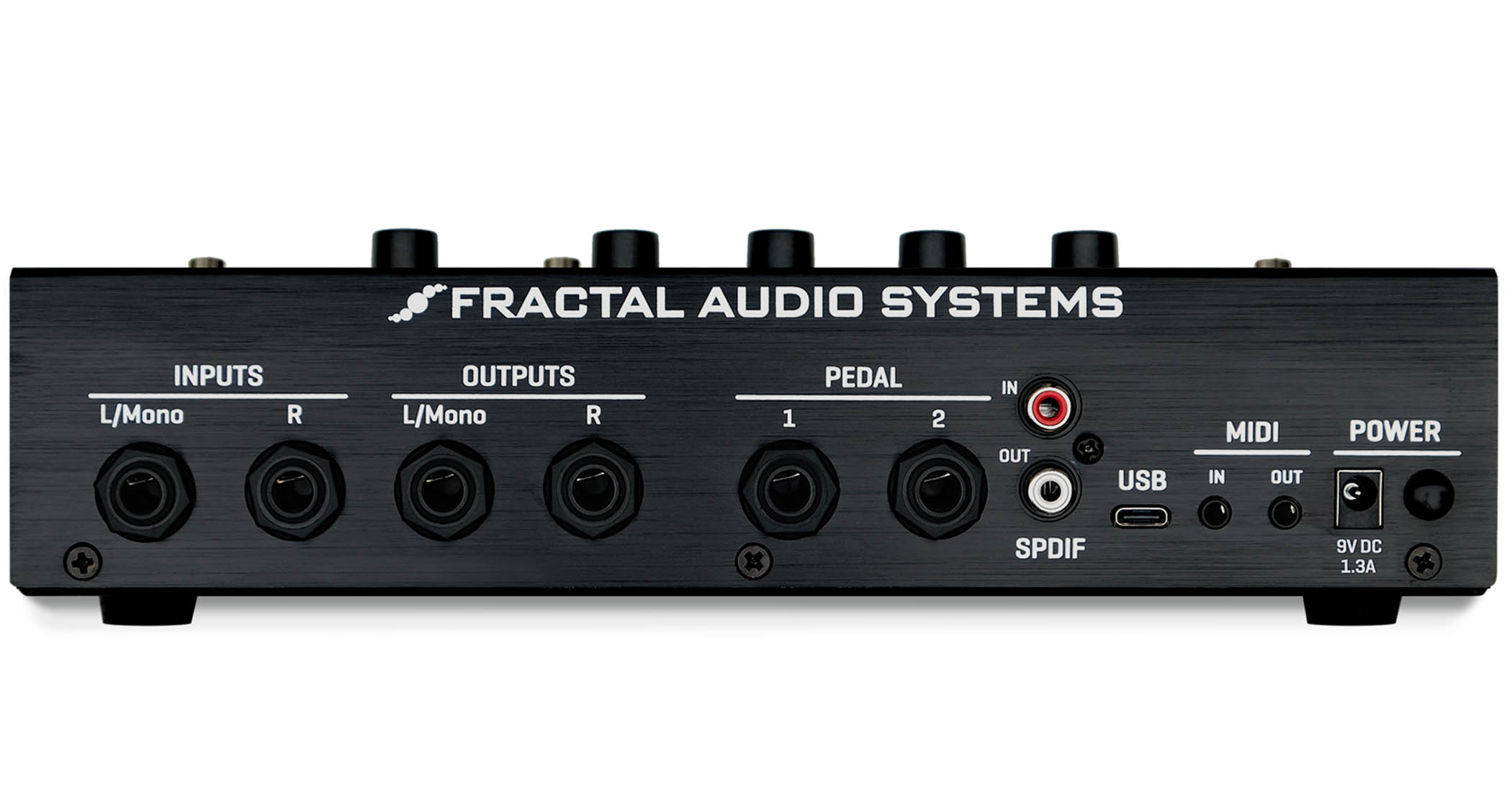“Over 400 effects based on those of the award-winning Axe-Fx III”: Fractal launches the VP4 ‘Virtual Pedalboard’ – a compact, hugely configurable digital multi-effects unit that could give your 'board the night off
The Fractal VP4 stakes a claim for pedalboard supremacy offering players hundreds of sounds in an easy-to-use format, 104 user configurable presets, and a signal path that can be populated by up to four effects simultaneously,

Fractal Audio Systems has unveiled a new guitar multi-effects pedal that presents hundreds of effects from its flagship Axe-Fx III amp modeller in an compact “Virtual Pedalboard”.
The VP4 has four footswitches, allows players to create signal chains of up to four effects, and is designed to be used with your guitar amp – or modeller – not to replace it. There are no amp models here.
But what the VP4 could do is either potentially replacing your pedalboard or give it one heck of a power-up. The VP4 is all about rig expansion, giving players access to a range of guitar effects that would be punitively expensive to acquire in hardware form.
We could list all of the effects but it could take some time and life is short. Fractal says there are over 400 of them, models of classic stompboxes and studio effects, “including drives, delays, reverbs, choruses, flangers, phasers, pitch, plex, EQs, compressors, wah, tremolo…” And the list goes on, with all the familiar favourites.
Some of these will be less familiar, such as “Plex”? Plex is a Fractal thing, a delay block from the Axe-Fx III and FM family of modellers, and it’s where you can design some super ethereal sounds.
Players can pick up to four effects, place them in any order and save the down into a preset, ergo each preset is its own pedalboard. The VP4 has space for 104 onboard presets (read: 104 different four-pedal pedalboards to choose from), and you can apply a noise gate, tweak the EQ and levels on each of these presets.
Besides the sound quality, one of the reason why so pros us Fractal’s Axe-Fx modellers onstage is how easy it makes life. The VP4 offers a similar experience, albeit scaled down. It can be used just like your "real" pedalboard, assigning an effect to each footswitch and then switching them in and out on demand.
Want all the hottest music and gear news, reviews, deals, features and more, direct to your inbox? Sign up here.

Alternatively, you can use it in Gig Mode, where some of the more interesting features come online with presets, scenes, and channels. This is where you’ll find the guitar tuner and the tap tempo for time-based effects.
Continuing on with the them of rig expansion, there are inputs for two expression pedals or control switches, enhancing control over the effects – and you’ll definitely use this if you want to use the VP4’s range of wah pedals.
There are flexible routing options, with mono/stereo options, and the option to send some effects into the front end of your amp and some through its effects loop. It has a buffered analogue bypass. There is are MIDI and USB connections, and the promise of deeper edits made easy via the VP4-Edit app.

The display screen should help with onboard edits, and will of course be indispensable when using the tuner.
Is all of the above enough to give Fractal the edge over Line 6’s HX Effects unit? Well, that remains to be seen. But both are here to serve similar purposes in life, placing heaps of effects at the feet of guitar players who are very happy with their amp.
Priced $699, the VP4 is available now. See Fractal Audio Systems for more.
Jonathan Horsley has been writing about guitars and guitar culture since 2005, playing them since 1990, and regularly contributes to MusicRadar, Total Guitar and Guitar World. He uses Jazz III nylon picks, 10s during the week, 9s at the weekend, and shamefully still struggles with rhythm figure one of Van Halen’s Panama.

